Design of Rotating Electrical Machines
Original price was: ₹12,448.50.₹9,958.80Current price is: ₹9,958.80.
ISBN: 9781118581575
Author/Editor: Juha Pyrhonen
Publisher: John Wiley
Year: 2014
Available on backorder
Description
In one complete volume, this essential reference presents an in-depth overview of the theoretical principles and techniques of electrical machine design. This timely new edition offers up-to-date theory and guidelines for the design of electrical machines, taking into account recent advances in permanent magnet machines as well as synchronous reluctance machines.
New coverage includes:
Brand new material on the ecological impact of the motors, covering the eco-design principles of rotating electrical machines
An expanded section on the design of permanent magnet synchronous machines, now reporting on the design of tooth-coil, high-torque permanent magnet machines and their properties
Large updates and new material on synchronous reluctance machines, air-gap inductance, losses in and resistivity of permanent magnets (PM), operating point of loaded PM circuit, PM machine design, and minimizing the losses in electrical machines>
End-of-chapter exercises and new direct design examples with methods and solutions to real design problems>
A supplementary website hosts two machine design examples created with MATHCAD: rotor surface magnet permanent magnet machine and squirrel cage induction machine calculations. Also a MATLAB code for optimizing the design of an induction motor is provided
Outlining a step-by-step sequence of machine design, this book enables electrical machine designers to design rotating electrical machines. With a thorough treatment of all existing and emerging technologies in the field, it is a useful manual for professionals working in the diagnosis of electrical machines and drives. A rigorous introduction to the theoretical principles and techniques makes the book invaluable to senior electrical engineering students, postgraduates, researchers and university lecturers involved in electrical drives technology and electromechanical energy conversion.
Additional information
| Weight | 1.238 kg |
|---|
Product Properties
| Year of Publication | 2014 |
|---|---|
| Table of Contents | Preface xi About the Authors xiii Abbreviations and Symbols xv 1 Principal Laws and Methods in Electrical Machine Design 1 1.1 Electromagnetic Principles 1 1.2 Numerical Solution 8 1.3 The Most Common Principles Applied to Analytic Calculation 12 1.3.1 Flux Line Diagrams 16 1.3.2 Flux Diagrams for Current-Carrying Areas 22 1.4 Application of the Principle of Virtual Work in the Determination of Force and Torque 25 1.5 Maxwell s Stress Tensor; Radial and Tangential Stress 32 1.6 Self-Inductance and Mutual Inductance 36 1.7 Per Unit Values 42 1.8 Phasor Diagrams 45 Bibliography 47 2 Windings of Electrical Machines 48 2.1 Basic Principles 49 2.1.1 Salient-Pole Windings 49 2.1.2 Slot Windings 53 2.1.3 End Windings 54 2.2 Phase Windings 54 2.3 Three-Phase Integral Slot Stator Winding 57 2.4 Voltage Phasor Diagram and Winding Factor 64 2.5 Winding Analysis 72 2.6 Short Pitching 74 2.7 Current Linkage of a Slot Winding 81 2.8 Poly-Phase Fractional Slot Windings 94 2.9 Phase Systems and Zones of Windings 97 2.9.1 Phase Systems 97 2.9.2 Zones of Windings 99 2.10 Symmetry Conditions 101 2.10.1 Symmetrical Fractional Slot Windings 101 2.11 Base Windings 104 2.11.1 First-Grade Fractional Slot Base Windings 104 2.11.2 Second-Grade Fractional Slot Base Windings 105 2.11.3 Integral Slot Base Windings 106 2.12 Fractional Slot Windings 108 2.12.1 Single-Layer Fractional Slot Windings 108 2.12.2 Double-Layer Fractional Slot Windings 117 2.13 Single- and Double-Phase Windings 124 2.14 Windings Permitting a Varying Number of Poles 127 2.15 Commutator Windings 129 2.15.1 Lap Winding Principles 133 2.15.2 Wave Winding Principles 136 2.15.3 Commutator Winding Examples, Balancing Connectors 139 2.15.4 AC Commutator Windings 143 2.15.5 Current Linkage of the Commutator Winding and Armature Reaction 144 2.16 Compensating Windings and Commutating Poles 146 2.17 Rotor Windings of Asynchronous Machines 149 2.18 Damper Windings 152 Bibliography 153 3 Design of Magnetic Circuits 155 3.1 Air Gap and its Magnetic Voltage 161 3.1.1 Air Gap and Carter Factor 161 3.1.2 Air Gaps of a Salient-Pole Machine 166 3.1.3 Air Gap of Nonsalient-Pole Machine 172 3.2 Equivalent Core Length 173 3.3 Magnetic Voltage of a Tooth and a Salient Pole 176 3.3.1 Magnetic Voltage of a Tooth 176 3.3.2 Magnetic Voltage of a Salient Pole 180 3.4 Magnetic Voltage of Stator and Rotor Yokes 180 3.5 No-Load Curve, Equivalent Air Gap and Magnetizing Current of the Machine 183 3.6 Magnetic Materials of a Rotating Machine 186 3.6.1 Characteristics of Ferromagnetic Materials 189 3.6.2 Losses in Iron Circuits 194 3.7 Permanent Magnets in Rotating Machines 203 3.7.1 History and Development of Permanent Magnets 203 3.7.2 Characteristics of Permanent Magnet Materials 205 3.7.3 Operating Point of a Permanent Magnet Circuit 210 3.7.4 Demagnetization of Permanent Magnets 217 3.7.5 Application of Permanent Magnets in Electrical Machines 219 3.8 Assembly of Iron Stacks 226 Bibliography 227 4 Inductances 229 4.1 Magnetizing Inductance 230 4.2 Leakage Inductances 233 4.2.1 Division of Leakage Flux Components 235 4.3 Calculation of Flux Leakage 238 4.3.1 Skewing Factor and Skew Leakage Inductance 239 4.3.2 Air-Gap Leakage Inductance 243 4.3.3 Slot Leakage Inductance 248 4.3.4 Tooth Tip Leakage Inductance 259 4.3.5 End Winding Leakage Inductance 260 Bibliography 264 5 Resistances 265 5.1 DC Resistance 265 5.2 Influence of Skin Effect on Resistance 266 5.2.1 Analytical Calculation of Resistance Factor 266 5.2.2 Critical Conductor Height in Slot 276 5.2.3 Methods to Limit the Skin Effect 277 5.2.4 Inductance Factor 278 5.2.5 Calculation of Skin Effect in Slots Using Circuit Analysis 279 5.2.6 Double-Sided Skin Effect 287 Bibliography 292 6 Design Process of Rotating Electrical Machines 293 6.1 Eco-Design Principles of Rotating Electrical Machines 293 6.2 Design Process of a Rotating Electrical Machine 294 6.2.1 Starting Values 294 6.2.2 Main Dimensions 297 6.2.3 Air Gap 305 6.2.4 Winding Selection 309 6.2.5 Air-Gap Flux Density 310 6.2.6 The No-Load Flux of an Electrical Machine and the Number of Winding Turns 311 6.2.7 New Air-Gap Flux Density 316 6.2.8 Determination of Tooth Width 317 6.2.9 Determination of Slot Dimensions 318 6.2.10 Determination of the Magnetic Voltages of the Air Gap, and the Stator and Rotor Teeth 323 6.2.11 Determination of New Saturation Factor 326 6.2.12 Determination of Stator and Rotor Yoke Heights and Magnetic Voltages 326 6.2.13 Magnetizing Winding 327 6.2.14 Determination of Stator Outer and Rotor Inner Diameter 329 6.2.15 Calculation of Machine Characteristics 329 Bibliography 330 7 Properties of Rotating Electrical Machines 331 7.1 Machine Size, Speed, Different Loadings and Efficiency 331 7.1.1 Machine Size and Speed 331 7.1.2 Mechanical Loadability 333 7.1.3 Electrical Loadability 337 7.1.4 Magnetic Loadability 338 7.1.5 Efficiency 340 7.2 Asynchronous Motor 342 7.2.1 Current Linkage and Torque Production of an Asynchronous Machine 342 7.2.2 Impedance and Current Linkage of a Cage Winding 349 7.2.3 Characteristics of an Induction Machine 356 7.2.4 Equivalent Circuit Taking Asynchronous Torques and Harmonics into Account 361 7.2.5 Synchronous Torques 367 7.2.6 Selection of the Slot Number of a Cage Winding 369 7.2.7 Construction of an Induction Motor 371 7.2.8 Cooling and Duty Types 373 7.2.9 Examples of the Parameters of Three-Phase Industrial Induction Motors 378 7.2.10 Asynchronous Generator 380 7.2.11 Wound Rotor Induction Machine 382 7.2.12 Asynchronous Motor Supplied with Single-Phase Current 383 7.3 Synchronous Machines 388 7.3.1 Inductances of a Synchronous Machine in Synchronous Operation and in Transients 390 7.3.2 Loaded Synchronous Machine and Load Angle Equation 400 7.3.3 RMS Value Phasor Diagrams of a Synchronous Machine 407 7.3.4 No-Load Curve and Short-Circuit Test 417 7.3.5 Asynchronous Drive 419 7.3.6 Asymmetric-Load-Caused Damper Currents 423 7.3.7 Shift of Damper Bar Slotting from the Symmetry Axis of the Pole 424 7.3.8 V Curve of a Synchronous Machine 426 7.3.9 Excitation Methods of a Synchronous Machine 426 7.3.10 Permanent Magnet Synchronous Machines 427 7.3.11 Synchronous Reluctance Machines 456 7.4 DC Machines 468 7.4.1 Configuration of DC Machines 468 7.4.2 Operation and Voltage of a DC Machine 470 7.4.3 Armature Reaction of a DC machine and Machine Design 474 7.4.4 Commutation 475 7.5 Doubly Salient Reluctance Machine 479 7.5.1 Operating Principle of a Doubly Salient Reluctance Machine 479 7.5.2 Torque of an SR Machine 480 7.5.3 Operation of an SR Machine 481 7.5.4 Basic Terminology, Phase Number and Dimensioning of an SR Machine 485 7.5.5 Control Systems of an SR Motor 489 7.5.6 Future Scenarios for SR Machines 491 Bibliography 492 8 Insulation of Electrical Machines 495 8.1 Insulation of Rotating Electrical Machines 497 8.2 Impregnation Varnishes and Resins 503 8.3 Dimensioning of an Insulation 506 8.4 Electrical Reactions Ageing Insulation 509 8.5 Practical Insulation Constructions 510 8.5.1 Slot Insulations of Low-Voltage Machines 511 8.5.2 Coil End Insulations of Low-Voltage Machines 512 8.5.3 Pole Winding Insulations 512 8.5.4 Low-Voltage Machine Impregnation 513 8.5.5 Insulation of High-Voltage Machines 513 8.6 Condition Monitoring of Insulation 515 8.7 Insulation in Frequency Converter Drives 518 Bibliography 521 9 Losses and Heat Transfer 523 9.1 Losses 524 9.1.1 Resistive Losses 524 9.1.2 Iron Losses 526 9.1.3 Additional Losses 526 9.1.4 Mechanical Losses 527 9.1.5 Decreasing Losses 529 9.1.6 Economics of Energy Savings 533 9.2 Heat Removal 534 9.2.1 Conduction 534 9.2.2 Radiation 538 9.2.3 Convection 541 9.3 Thermal Equivalent Circuit 548 9.3.1 Analogy between Electrical and Thermal Quantities 548 9.3.2 Average Thermal Conductivity of a Winding 549 9.3.3 Thermal Equivalent Circuit of an Electrical Machine 550 9.3.4 Modeling of Coolant Flow 560 9.3.5 Solution of Equivalent Circuit 565 9.3.6 Cooling Flow Rate 568 Bibliography 568 Appendix A 570 Appendix B 572 Index 575 |
| Author | Juha Pyrhonen |
| ISBN/ISSN | 9781118581575 |
| Binding | Hardback |
| Edition | 2 |
| Publisher | John Wiley |
You must be logged in to post a review.

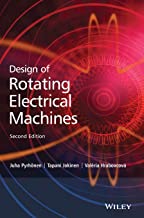
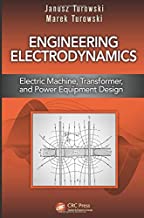
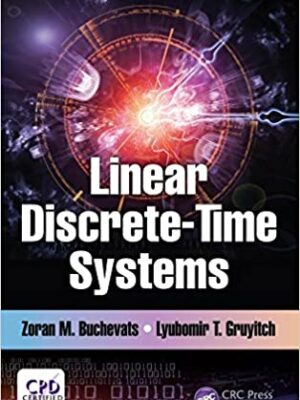
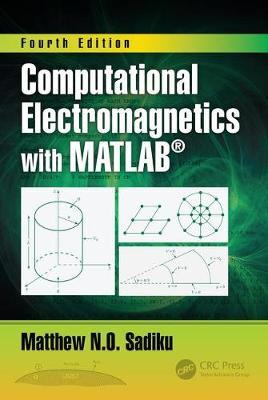
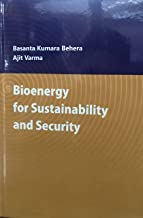
Reviews
There are no reviews yet.